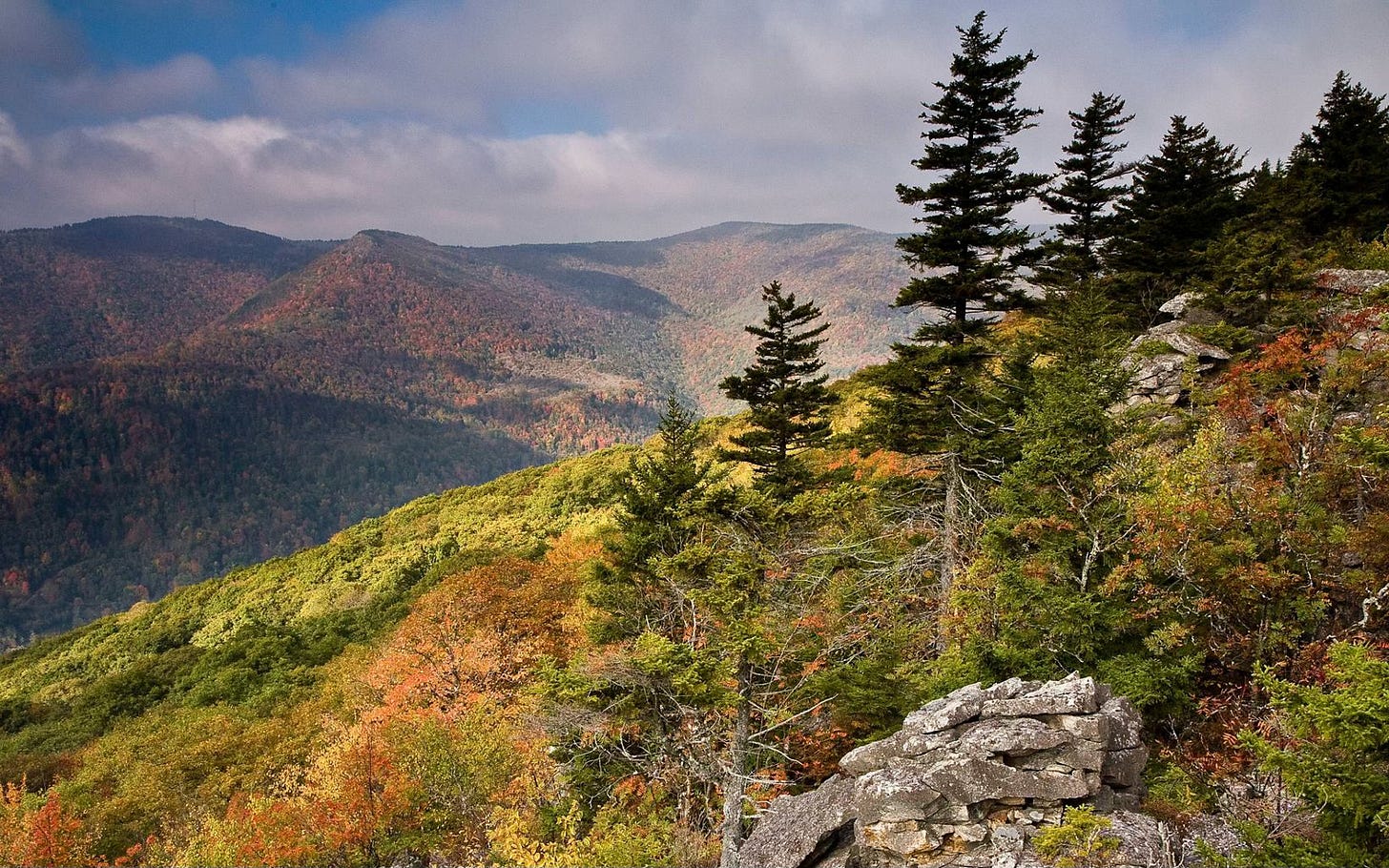Success in restoring mined lands in Appalachia
Wetland creation may mitigate the effects of climate change
Recently published research has found a great deal of success with restoration efforts of old surface mines in Appalachia. This is very good news and may, as the authors suggest, help mitigate the ecological effects of climate change in the region.
The woodlands of Appalachia have been abused and exploited for over 150 years. The region’s red spruce-dominated forests were heavily logged in the late 1800s.1 Unregulated, the mountains and valleys could be clear-cut or nearly so. A mainstay of the Appalachian forests, the American chestnut, is now virtually extinct, because of an introduced blight.

Picking up in the 1940s and continuing to this day, coal mining—and in particular, surface mining that metastasized into the destructive practice of mountaintop removal— further harmed the Appalachian forests. In West Virginia, red spruce forests occupy only about ten percent of their historic range.2
The mountaintop mines are huge, so large they dwarf nearby towns and can even be seen from space.

It is hard to believe that such destruction can be mitigated, but many of the mines have been or are being restored by planting red spruce and other native plants, More recently, wetland creation has been added to these efforts. Researchers recently looked at how successful the wetland creation has been.
The research
The researchers looked at the abundance of amphibians—frogs, salamanders, and newts—in wetlands created in former surface mines in Randolph and Pocahontas Counties, which are in the southeastern portion of West Virginia. Amphibians are highly sensitive to changes in their environments and are thus good indicators of habitat quality.
They assessed the numbers of amphibians found in newly created wetlands and ponds. Some of these habitats were created on former surface mines less than ten years ago. They compared these numbers to the numbers of amphibians found in wetlands and ponds on very old surface mines that were abandoned 50 years ago or longer, and natural, undisturbed forests.
Surprisingly, even in recently created wetlands, the numbers of amphibians were comparable to those found in ponds in undisturbed, natural forests. The researchers attribute this success to the great number of wetlands that have been created and the comprehensive restoration regime that includes decompacting the soils after they have been compacted by heavy equipment, tree planting, and loading site with woody debris. The woody debris creates microclimates and hiding places for amphibians and other small animals. This research was published in the journal Water this past April.
Amphibians are comparatively plentiful in West Virginia. As a child growing up there, I remember often coming across toads around our farm. In spring, the nearby ponds could swarm with tadpoles, and in summer, frogs would jump and swim in those ponds. In the eastern portion of the state, many amphibians rely on the very wet weather there. Pocahontas County averages about five feet of snow each winter and receives almost 50 inches of rain the rest of the year.
In the past ten years, a coalition of the U.S. Forest Service, Green Forest Works, and the Appalachian Regional Reforestation Initiative spearheaded a reforestation effort on the old (abandoned?) mines. Reclamation of mines had previously been performed, unsuccessfully, by planting nonnative grasses.
The researchers noted that climate change poses an additional threat to Appalachian red spruce ecosystems; for almost a decade, climate predictions have inferred a further loss of red spruce forests. The scientists urge further comprehensive restoration efforts that include wetland creation in the hope of mitigating the loss of forests and the fauna of this ecoregion.
X (You can find me on that thing formerly known as Twitter.)
Byers, E.A., Vanderhorst, J.P. and Streets, B.P., 2010. Classification and conservation assessment of upland red spruce communities in West Virginia. WV Natural Heritage Program, WVDNR, Elkins, WV.
Ibid





Paul, your piece offers a striking view on the revival of Appalachia’s lands. While the science is clear and hopeful, I find myself wondering about the uncharted dimensions of this renewal. What does the silent resilience of these ecosystems tell us about the unseen forces of nature? Maybe it’s not just the physical restoration but the underlying pulse of the earth reclaiming its space, whispering in ways we rarely notice. It’s a testament to a kind of quiet persistence that defies our understanding, dancing on the edge of what we can comprehend.
I love restoration stories, which give us hope in ecologically bleak times. This brought to mind Lehigh Gap in Pennsylvania. The mountains there were completely denuded by heavy metal pollution from a zinc mine that operated for many decades. It became a Superfund site and was restored by introducing topsoil and using prairie grasses and other plants that would process the heavy metals, slowly reinvigorating the soil. If anyone is interested in this remarkable story, start here: https://lgnc.org/about-lgnc/about/